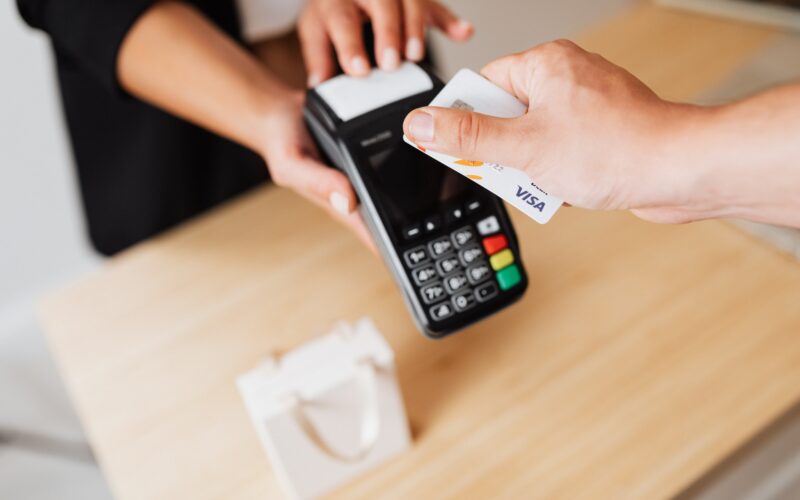The Complex World of High-Risk Ecommerce Merchant Accounts ===
In today’s digital age, ecommerce has become a major part of business operations for many organizations. However, not all businesses are able to obtain a standard ecommerce merchant account. Some organizations are deemed too risky for traditional merchant account providers and must instead seek out high-risk merchant account providers. This can be a confusing and daunting process for businesses, but understanding the reasons why ecommerce merchant accounts are considered high-risk can help demystify the process.
===H2: What are the common reasons businesses are considered high-risk for ecommerce merchant accounts? ===
There are several reasons why a business may be considered high-risk for an ecommerce merchant account. One of the most common reasons is the nature of the business itself. For example, businesses that deal with high-value transactions, such as luxury goods or high-end electronics, are often considered high-risk. Other businesses, such as travel agencies or online gambling sites, are also often labeled as high-risk due to the potential for chargebacks and fraud.
Another reason why a business may be considered high-risk is their creditworthiness. If a business has a poor credit history or has filed for bankruptcy in the past, they may struggle to obtain a standard merchant account and be forced to seek out a high-risk provider. Additionally, businesses that operate in certain industries, such as adult entertainment or online firearms sales, may also be deemed too risky for traditional merchant account providers.
===H3: How do high-risk merchant accounts differ from standard accounts? ===
High-risk merchant accounts often come with higher fees and stricter terms and conditions than standard merchant accounts. This is because high-risk providers are taking on a greater risk by working with these types of businesses. High-risk providers may require more upfront fees, higher transaction fees, and longer hold periods on funds to mitigate their risk. Additionally, high-risk providers may impose stricter chargeback and fraud prevention policies on their clients to reduce the likelihood of losses.
One of the biggest differences between high-risk and standard merchant accounts is the application process. High-risk providers will often scrutinize a business’s financial history, risk profile, and marketing strategies more closely than traditional providers. They may also require more documentation and information from the business, such as detailed business plans and financial statements, before granting an account. This can make obtaining a high-risk merchant account a more challenging and time-consuming process for businesses.
===H2: The Impact of Chargebacks on Ecommerce Merchant Accounts ===
Chargebacks are one of the biggest risks for ecommerce merchants, and they can have a significant impact on a business’s merchant account. Chargebacks occur when a customer disputes a charge on their credit card and the funds are returned to the customer. This can be due to a variety of reasons, such as fraudulent activity, product not received, or defective merchandise. Chargebacks can be costly for businesses, as they may lose the value of the sale, incur chargeback fees from their payment processor, and potentially damage their reputation.
===H3: What are chargebacks and how do they affect ecommerce merchants? ===
Chargebacks occur when a customer disputes a charge on their credit card and the funds are returned to the customer. Chargebacks can be costly for ecommerce merchants, as they may lose the value of the sale, incur chargeback fees from their payment processor, and potentially damage their reputation. High levels of chargebacks can also trigger alarm bells for payment processors and lead to a business being labeled as high-risk.
Ecommerce merchants can reduce the risk of chargebacks by implementing effective fraud prevention strategies, such as verifying orders with customers and using fraud detection software. They can also improve customer service and communication to reduce the likelihood of disputes. However, even with these measures in place, chargebacks can still occur and have a significant impact on a business’s merchant account.
===H3: How do high chargeback ratios increase the risk of merchant accounts being labeled high-risk? ===
High chargeback ratios can be a red flag for payment processors and can result in a business being labeled as high-risk. This is because high chargeback ratios indicate a higher likelihood of fraud or customer disputes, which can lead to financial losses for payment processors. When a payment processor sees a high chargeback ratio for a business, they may see it as a sign of a risky business and may impose stricter terms and conditions or even terminate the merchant account altogether.
To avoid being labeled as high-risk due to chargebacks, businesses need to keep their chargeback ratios as low as possible. This can be achieved through effective fraud prevention strategies, good customer service, and clear communication with customers. Businesses should also work closely with their payment processor to understand their chargeback policies and how to minimize their risk of chargebacks.
===H2: The Importance of Payment Processing in Ecommerce ===
Payment processing is a critical component of ecommerce and can have a significant impact on a business’s success. Choosing the right payment processor is essential for ensuring secure and efficient payment processing for customers, as well as minimizing the risk of chargebacks and fraud.
===H3: What role does payment processing play in ecommerce? ===
Payment processing is the process of securely transmitting payment information between a merchant and a customer’s bank or credit card company. Payment processing is a critical component of ecommerce, as it allows customers to securely purchase products and services online. Payment processors are responsible for verifying the transaction, processing the payment, and transferring funds to the merchant’s account.
Choosing the right payment processor is essential for ecommerce merchants, as it can impact the customer experience and the business’s bottom line. For example, a payment processor with a high rate of declined transactions or slow processing times can lead to frustrated customers and lost sales. Additionally, a payment processor with weak fraud prevention measures can increase the risk of chargebacks and financial losses for the business.
===H3: How can choosing the wrong payment processor lead to businesses becoming high-risk merchants? ===
Choosing the wrong payment processor can have serious consequences for ecommerce merchants, and can even lead to a business being labeled as high-risk. For example, payment processors that have high rates of fraudulent transactions or a lack of effective fraud prevention measures can result in a higher likelihood of chargebacks and disputes. This can lead to financial losses for the payment processor and may result in the business being labeled as high-risk.
Additionally, payment processors that have a history of freezing or terminating merchant accounts can also be risky for ecommerce merchants. If a payment processor freezes or terminates a merchant account due to suspected fraudulent activity or high chargeback ratios, the business may struggle to find another payment processor willing to work with them. This can lead to a loss of revenue and damage to the business’s reputation.
===H2: The Role of Fraud Prevention in Ecommerce Merchant Accounts ===
Fraud prevention is an essential component of ecommerce and can help reduce the risk of chargebacks, disputes, and financial losses. However, implementing effective fraud prevention strategies can be challenging, especially for high-risk ecommerce merchants.
===H3: How does fraud impact ecommerce merchants and their accounts? ===
Fraud can have a significant impact on ecommerce merchants and their accounts. Fraudulent transactions can result in chargebacks and disputes, which can lead to financial losses for the merchant. Additionally, fraudulent activity can damage the merchant’s reputation and lead to increased scrutiny from payment processors and other stakeholders.
High-risk ecommerce merchants are particularly vulnerable to fraud, as they are often targeted by fraudsters due to the nature of their business. Fraud prevention is therefore critical for high-risk merchants to reduce their risk of chargebacks and financial losses.
===H3: What are some effective fraud prevention strategies for ecommerce merchants? ===
There are several effective fraud prevention strategies that ecommerce merchants can implement to reduce their risk of fraud. One of the most effective strategies is to use fraud detection software that can analyze transactions and detect suspicious activity. Merchants can also implement strong authentication measures, such as two-factor authentication, to reduce the risk of fraudulent transactions.
Another effective strategy is to closely monitor transactions for unusual activity, such as large orders or orders from unusual locations. Merchants can also verify orders with customers before fulfilling them, or require additional documentation for high-risk transactions. Additionally, merchants can improve their customer service and communication to reduce the likelihood of disputes and chargebacks.
===H2: The Challenges of Obtaining High-Risk Ecommerce Merchant Accounts ===
Obtaining a high-risk ecommerce merchant account can be a challenging and time-consuming process for businesses. High-risk providers often have stricter requirements and may require more documentation than traditional providers. Additionally, high-risk businesses may struggle to find a provider willing to work with them due to their perceived risk.
===H3: What are some of the difficulties businesses face when applying for high-risk merchant accounts? ===
One of the biggest challenges businesses face when applying for high-risk merchant accounts is finding a provider that is willing to work with them. High-risk providers have stricter requirements and may require more documentation and information from the business, such as detailed business plans and financial statements. Additionally, high-risk providers may charge higher fees and impose stricter terms and conditions than traditional providers.
Another challenge for businesses seeking high-risk merchant accounts is the application process itself. High-risk providers may scrutinize a business’s financial history, risk profile, and marketing strategies more closely than traditional providers. This can make the application process more time-consuming and challenging for businesses.
===H3: How can businesses increase their chances of being approved for a high-risk merchant account? ===
To increase their chances of being approved for a high-risk merchant account, businesses should take steps to mitigate their risk and improve their creditworthiness. This can include implementing effective fraud prevention strategies, maintaining a low chargeback ratio, and improving their financial standing.
Additionally, businesses should do their research to find a high-risk provider that is a good fit for their needs. This may involve reviewing the provider’s terms and conditions, fees, and fraud prevention measures. Businesses should also be prepared to provide detailed documentation and information about their business to the provider, as this can help demonstrate their creditworthiness and reduce their perceived risk.












